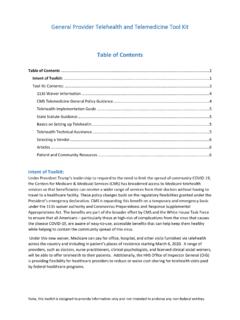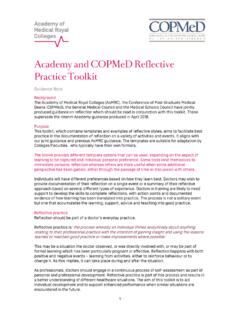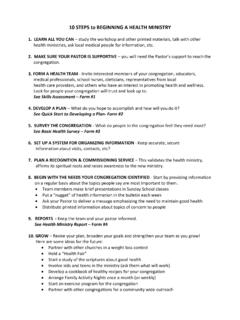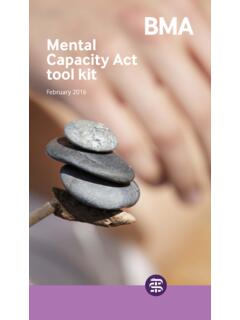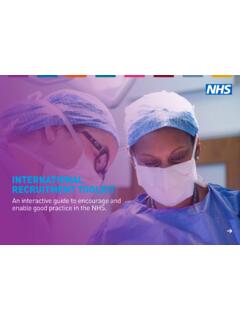Transcription of FIFTEEN STEPS FOR MATERNITY - NHS England
1 Quality from the perspective of people who use MATERNITY services#15 StepsforMaternityFIFTEEN STEPS FORMATERNITY15 STEPS FOR MATERNITY : QUALITY FROM THE PERSPECTIVE OF PEOPLE WHO USE MATERNITY SERVICES15 STEPS FOR MATERNITY : QUALITY FROM THE PERSPECTIVE OF PEOPLE WHO USE MATERNITY SERVICESV ersion number: 1 First published: 2018 Prepared by: Experience of Care team NHS EnglandClassification: OFFICIALP ublications Gateway Reference: 07867315 STEPS FOR MATERNITY : QUALITY FROM THE PERSPECTIVE OF PEOPLE WHO USE MATERNITY SERVICES15 STEPS FOR MATERNITY : QUALITY FROM THE PERSPECTIVE OF PEOPLE WHO USE MATERNITY SERVICESCONTENTS1. Background of the 15 STEPS for MATERNITY ..52. Getting started with the 15 STEPS for MATERNITY ..73. What to look out for during the 15 STEPS for MATERNITY ..104. The 15 STEPS for MATERNITY Observation Guides ..155. What to do with the findings of the 15 STEPS for MATERNITY ?
2 166. Appendix A: Poster for staff and service users ..177. Appendix B: Positive Aspects and Action Plan ..188. Appendix C: How this toolkit aligns with other strategic initiatives ..209. Acknowledgements ..2310. Glossary ..26 This information can be made available in alternative formats, such as easy read or large print, and may be available in alternative languages, upon request. Please contact 0300 311 22 33 or email STEPS FOR MATERNITY : QUALITY FROM THE PERSPECTIVE OF PEOPLE WHO USE MATERNITY SERVICESI can tell what kind of care my daughter is going to get within 15 STEPS of walking onto every new ward.#15 StepsforMaternity515 STEPS FOR MATERNITY : QUALITY FROM THE PERSPECTIVE OF PEOPLE WHO USE MATERNITY SERVICES15 STEPS FOR MATERNITY : QUALITY FROM THE PERSPECTIVE OF PEOPLE WHO USE MATERNITY SERVICES1. BACKGROUND OF THE 15 STEPS FOR MATERNITY The NHS is committed to putting people at the heart of the healthcare.
3 At a patient and family experience workshop, a mother of a child needing frequent hospital admission I can tell what kind of care my daughter is going to get within 15 STEPS of walking on to the ward . This mother was not a clinician or a quality assurance manager, but very quickly she could tell some important things about the quality of care in the healthcare settings that she and her daughter were attending. This comment highlights how important it is to understand what good quality care looks and feels like from the perspective of the people who experience that care. People have high expectations for good quality care, which is respectful, evidence-based, kind and safe, delivered in welcoming and clean environments. This comment inspired the development of a suite of 15 STEPS toolkits that explore different healthcare settings through the eyes of those who use them and their relatives/carers.
4 This toolkit has been developed with MATERNITY Voice Partnerships (MVPs) in mind. MVPs are local teams of users/user reps, midwives, doctors and commissioners, working together to review, co-design and co-produce local MATERNITY services. There are usually a number of MVPs per Local MATERNITY System (LMS). This toolkit is easy to use and aligns with NHS priorities for MATERNITY care as outlined in the Better Births report published in 2016. This toolkit supports collaborative working between all those involved in using, reviewing, designing and delivering MATERNITY services, so that together improvements can be identified and implemented. The 15 STEPS for MATERNITY uses an observational approach to understanding what 615 STEPS FOR MATERNITY : QUALITY FROM THE PERSPECTIVE OF PEOPLE WHO USE MATERNITY SERVICES service users experience as they access local MATERNITY care. A number of 15 STEPS small teams can be created by utilising the local MATERNITY Voices Partnership to provide service user/user rep, plus a partner, family member or doula if possible, along with a staff member, commissioner or Trust Board member.
5 The small teams access local MATERNITY settings where care is provided to get a feel for the space, using all their senses to reflect on their first impressions and consider the impact of this experience. The small teams use the 15 STEPS for MATERNITY Observation Guides ensuring their observations are considerate of a wide variety of service users who access local MATERNITY care, with special care taken to consider the needs of seldom heard voices and minority enabling service users voices to be heard clearly, the tool can be used to gain an understanding of how people feel about the care provided, how high levels of confidence can be built by positive first impressions and what might be done to increase levels of confidence in the service as part of a continuous improvement journey. The 15 STEPS for MATERNITY is a tool for MATERNITY Voice Partnerships, which are multi-disciplinary in nature, meet on a regular basis and are part of wider, ongoing service improvement works.
6 MATERNITY Voice Partnerships may use other tools for gathering feedback about service users experience of local MATERNITY care such as Walk the Patch, online surveys or through community outreach. The 15 Step Challenge is not a performance management tool or an audit (clinical, quality, safety or otherwise).This toolkit has been co-created with MATERNITY service users, including those from seldom heard and minority groups and organisations that represent them. They expressed that the most important aspects of MATERNITY care, and the space in which MATERNITY care is provided, include: Welcoming & Informative Safe & Clean Friendly & Personal Organised & CalmTherefore, these are the themes that the toolkit focusses on and each of these four themes are broken down into a number of questions to ask oneself during the walkaround, and areas to consider before and after the walkaround.
7 715 STEPS FOR MATERNITY : QUALITY FROM THE PERSPECTIVE OF PEOPLE WHO USE MATERNITY SERVICES15 STEPS FOR MATERNITY : QUALITY FROM THE PERSPECTIVE OF PEOPLE WHO USE MATERNITY SERVICES2. GETTING STARTED WITH THE 15 STEPS FOR MATERNITY The MATERNITY Voices Partnership Service User Chair gathers users/user representatives, if possible, including partners, family members or doulas and prioritising those who represent seldom heard or minority groups. A number of staff members should be made available, including if possible clinical representation from Midwifery and Obstetrics. Ensure inclusion of Patient Experience; either a MATERNITY -based Patient Experience Midwife or a Trust-wide Patient Experience Officer and invite a commissioner or Trust Board member to participate. The Director/Head of Midwifery is likely to be able to assist with these contacts. Arrange for your participants to gather in a room for a short briefing near to where the 15 STEPS for MATERNITY will take place.
8 The briefing should include: An introduction to how the toolkit works The formation of small teams and designated areas What the small teams should be looking for How much time the small teams have How to use the Observation Guides Confidentiality of staff and current service users The need to use antibacterial hand gel The need to speak quietly and be discreet (no mobile phones) Appreciation for the users/user reps for giving their time voluntarily At the end of the briefing, the participants form small teams of three people, ensuring each team has representation of a service user/user rep and a staff member, and encourage staff members to review areas in which they do not currently work. 815 STEPS FOR MATERNITY : QUALITY FROM THE PERSPECTIVE OF PEOPLE WHO USE MATERNITY SERVICESM aternity settings which could be included in the 15 STEPS for MATERNITY : Antenatal Clinics - community and hospital Scanning Areas Day Assessment Areas Homebirth (this would need to be done with the homebirth midwives) Free-standing Midwifery-led Units and Alongside Midwifery-led Units Obstetric Units and Theatre Neonatal Units (because users view neonatal care as part of a MATERNITY journey) Postnatal Care Wards Postnatal Care Clinics - community and hospital If you have a number of small teams, all areas could be reviewed on the same day and the walkaround repeated annually.
9 If you have only one or two small teams, one or two areas could be reviewed and the toolkit used periodically to ensure coverage. How the toolkit is utilised should be at the discretion of those involved at a local level, unless there is Local MATERNITY System or regional specification. Each small team should utilise the Observation Guides in section 4 of this toolkit , to fully explore all aspects of the space and care provided and ensure that each is reflected upon. Note: the team will need to be able to differentiate between the relevant aspects of the toolkit in each area they visit, as it is designed for all MATERNITY settings. For example, there are themes relevant to the space and care provided during labour and birth, such as; is a birth ball available?, which would not be pertinent to a postnatal clinic within the community. Each small team should spend around 15-20 minutes in their designated area, if that feels appropriate, to experience how it feels to be there.
10 They may also observe interactions between staff and service users currently experiencing care. Of course, MATERNITY care is a private and confidential service and this will not be appropriate in some MATERNITY settings that are in use. When doing a walkaround in a birth environment extra sensitivity will be required. It is also important that current service users and staff are aware that the 15 STEPS for MATERNITY is taking place and the poster in Appendix A, which can be personalised for each MATERNITY Voices Partnership, provider or Local MATERNITY System, is a useful tool for this. 915 STEPS FOR MATERNITY : QUALITY FROM THE PERSPECTIVE OF PEOPLE WHO USE MATERNITY SERVICES15 STEPS FOR MATERNITY : QUALITY FROM THE PERSPECTIVE OF PEOPLE WHO USE MATERNITY SERVICES#15 StepsforMaternityThe 15 STEPS for MATERNITY is great; very clear and informative whilst allowing for STEPS FOR MATERNITY : QUALITY FROM THE PERSPECTIVE OF PEOPLE WHO USE MATERNITY SERVICES3.










